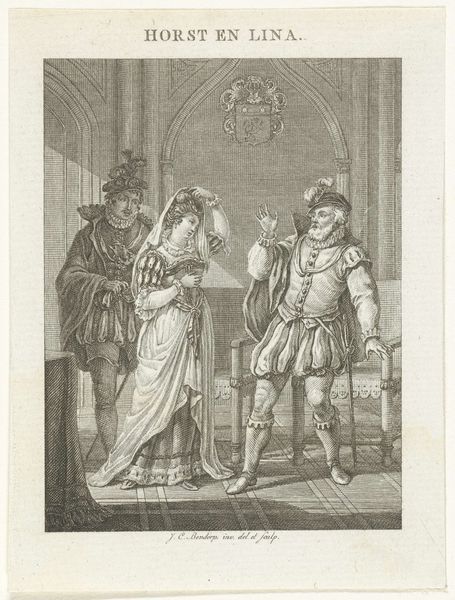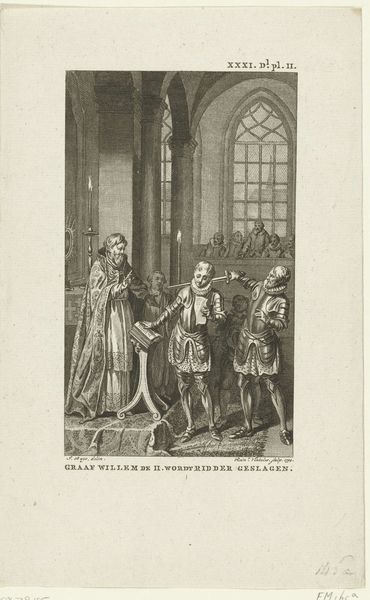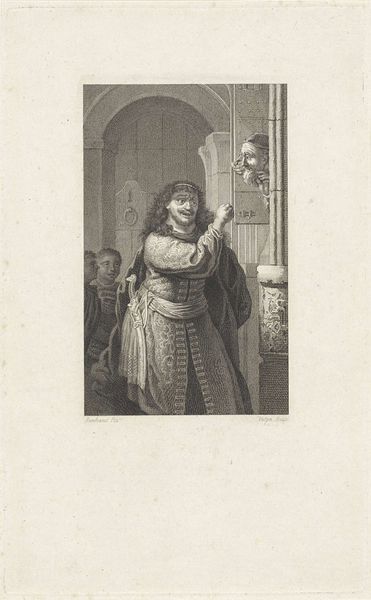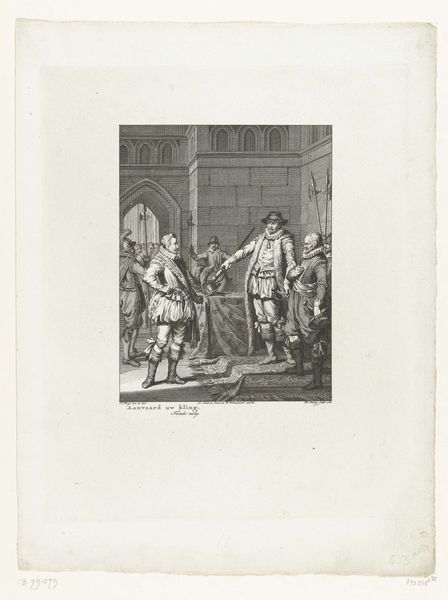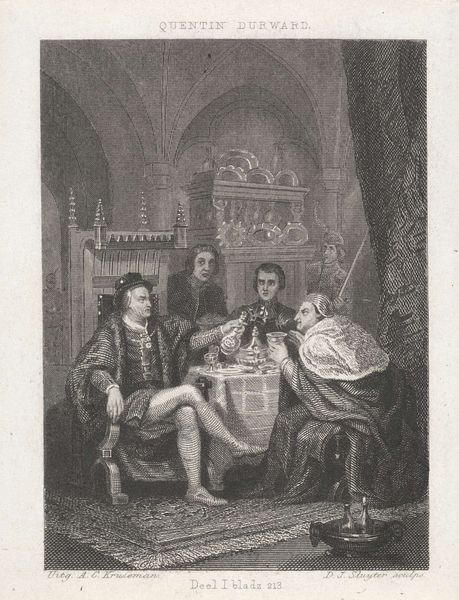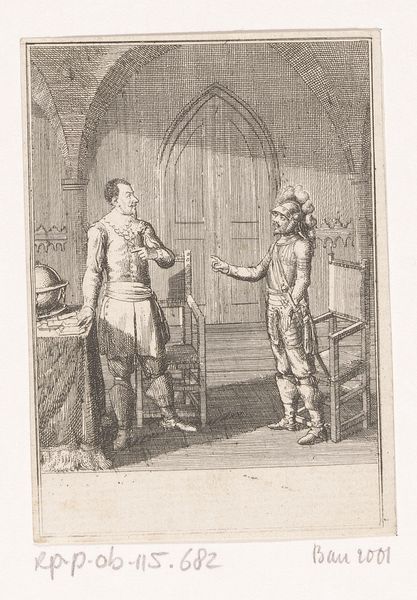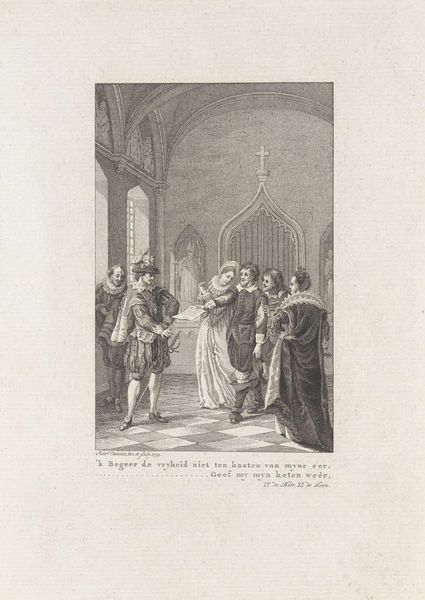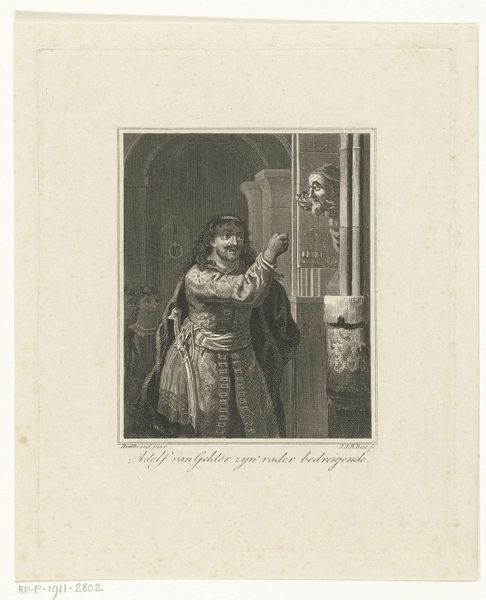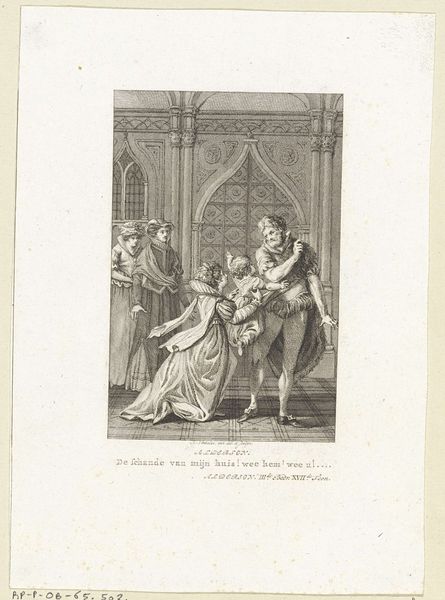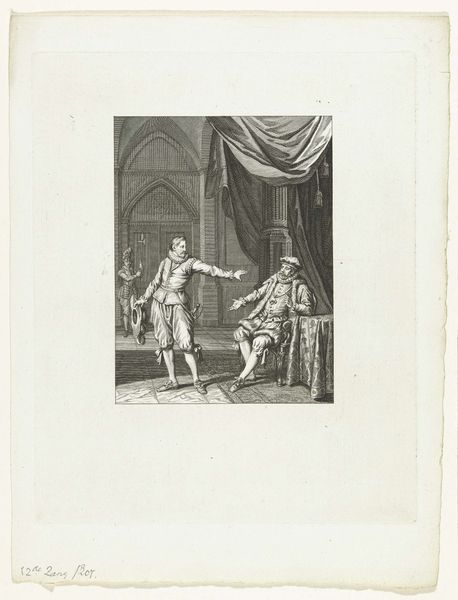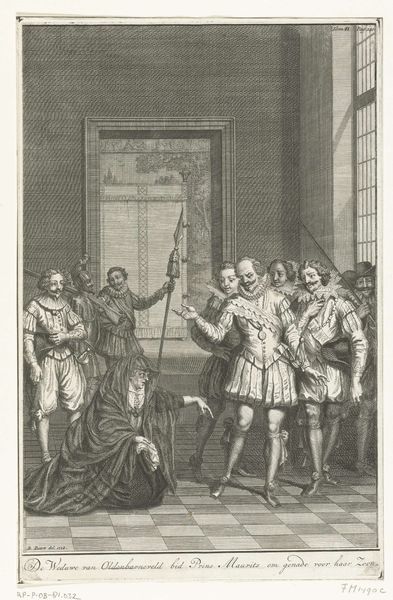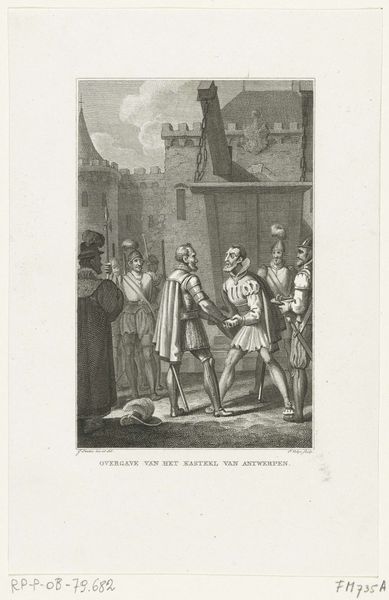
Gevangenneming van Johan van Oldenbarnevelt, 1618 1858 - 1860
0:00
0:00
janfrederikchristiaanreckleben
Rijksmuseum
Dimensions: height 278 mm, width 193 mm
Copyright: Rijks Museum: Open Domain
Curator: This is a print, “Gevangenneming van Johan van Oldenbarnevelt, 1618” by Jan Frederik Christiaan Reckleben, dating from 1858-1860. It is currently held in the Rijksmuseum. Editor: My first thought is how this monochrome image renders weight and gravity in the expressions and costumes. It almost feels photographic, yet obviously predates widespread photography. Curator: Indeed, the engraving meticulously captures a historical moment. Observe the balanced composition; the subjects are deliberately placed to create a sense of tension. Consider the contrast between Oldenbarnevelt, on the left, and his captors, and what that signifies. Editor: What strikes me, viewing it from a production angle, is the labor intensity required for an engraving like this. The meticulous cross-hatching and detail suggest a significant investment of time. One has to think about the availability of the print in relation to that labor. Who could afford these? Curator: Certainly, its creation necessitated advanced craftsmanship and dedication, but its availability would be wider than unique oil paintings, thus contributing to disseminating the image and historical narratives more broadly. Notice, too, how the light falls, accentuating the moment of apprehension on Oldenbarnevelt's face. Editor: Absolutely. And what about the paper itself? What type was used, and where was it sourced? Paper, then and now, carries its own history of resource extraction and processing. That smooth surface, essential for such detailed engraving, didn't arrive by accident. It represents an entire industry. Curator: An astute point. Material considerations are important here as it contributes to the texture. In summary, Reckleben’s print compels us to look beyond the depiction of an arrest and towards the complex visual narrative and symbolism embedded within it. Editor: Agreed. Exploring the social life of materials, especially paper and ink here, is crucial to comprehend the broader impact of the print itself, its circulation, and its consumption.
Comments
No comments
Be the first to comment and join the conversation on the ultimate creative platform.
